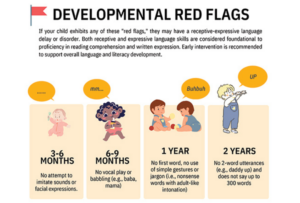FREE Pediatric Speech Therapy Exercises and Resources
 At Open Lines, we passionately believe every child’s potential can be nurtured and maximized with warmth, compassion, and the right tools and knowledge. That’s why our team of expert licensed speech-language pathologists has crafted an exclusive collection of downloadable pediatric speech therapy exercises and resources. We designed these resources to support the speech, language, and cognitive communication skills of children.
At Open Lines, we passionately believe every child’s potential can be nurtured and maximized with warmth, compassion, and the right tools and knowledge. That’s why our team of expert licensed speech-language pathologists has crafted an exclusive collection of downloadable pediatric speech therapy exercises and resources. We designed these resources to support the speech, language, and cognitive communication skills of children.
These free resources draw from the highest standards of evidence-based research to provide you with trusted educational resources and practical yet innovative tools. These resources are for parents, students, and professionals alike to nurture optimal growth and development in children.
We are committed to improving standards of excellence by finding solutions that strengthen communication to increase confidence and well-being. Our team designed these educational tools and activities specifically to strengthen care partner knowledge and to support the growth of every child’s speech, language, and cognitive communication skills!
Understanding Speech and Language Milestones
It’s common for families and professionals to wonder if their child’s speech and language are developing typically. All children make articulation and grammatical errors as they learn to master talking. Understanding common developmental communication milestones can reassure families by confirming that a child’s development is on track. It also helps to identify early any specific areas needing support, guiding effective action.
Our resources include detailed guides on vocabulary milestones, speech articulation development, and expressive language milestones. They help you track your child’s progress, distinguish appropriate speech and language error patterns, and identify areas that may need additional support.
Knowing what to expect at different ages allows you to recognize the signs of typical development as well as potential red flags. For instance, our “Developmental Red Flags” resource outlines signs that may indicate a receptive-expressive language delay or disorder. It supports and provides critical early detection insights. By understanding common communication development patterns, care partners can approach speech and language development with greater confidence and clarity.
TEXT: Vocabulary: How many words should my child have?
TEXT: Developmental Red Flags: Signs your child may have a receptive-expressive language delay/disorder.
TEXT: Typical age and development of skills for learning to talk
TEXT: What articulation errors are developmentally appropriate?
TEXT: Play Skills: Typical age and development of skills
TEXT: Typical age and development of babbling skills from 0-12 months
TEXT: Average age of speech sound acquisition
TEXT: How much of my child’s speech am I meant to understand?
Pediatric Speech Therapy Exercises and Therapeutic Tools for Communication Development
Looking for guidance or perhaps new activities and fresh perspectives on ways to support language and overall communication during daily routines? Open Lines offers therapeutic tools meant to enhance various aspects of communication. These resources include practical, science-backed tips for enhancing speech articulation, fluency, language processing, talking, and overall communication development.
For example, our “Step by Step Sequential Narrative” tool helps children organize and structure their stories, helping them convey information with greater efficiency and coherence. While “Supportive Language Strategies” provides practical tips for expanding language skills at home. For those working on speech articulation, “How to Model Speech” guides families in best practices for eliciting desired speech behaviors.
Social language resources like the “Thought Parking Lot” and alternatives to “I Don’t Know” help children manage social interactions. These resources offer effective methods to support children’s language and communication growth and makes sure they thrive both socially and academically. Activities are crafted to be both effective and enjoyable, aiming to encourage children to engage actively in their speech and language development. Such activities not only promote communication development but also strengthen the parent-child bond, creating a nurturing environment where connections can flourish.
TEXT: Tips for supporting language development at home
TEXT: Tips for showing and eliciting desired speech behaviors
TEXT: Visualize overall progress: Hierarchy of articulation skill development
TEXT: Visualize articulation accuracy and progress
TEXT: Stuttering: Tips for school-age children
TEXT: Stuttering: Tips to help preschool children with smooth speech
TEXT: Got something to say but it’s not the right time?
TEXT: Not sure how to ask for help? Try these tips!
TEXT: Linking Language: Visual tool to help your child share their stories
Supporting Speech Sound Articulation
Speech sound articulation development is another critical area addressed by our resources. Open Lines’ Minimal Pairs Picture Cards and accompanying pediatric speech therapy exercises are crafted by licensed pediatric speech therapists to address common speech and articulation challenges. These resources help children with articulation delays, where difficulty in producing certain sounds can make speech hard to understand and lead to frustration.
By using pairs of words that differ by a single sound, the Minimal Pairs approach teaches children to recognize differences in sounds and articulate specific sounds correctly and aids in their overall speech development. This evidence-based technique supports children in distinguishing between sounds. Ultimately, this improves their clarity and communication skills.
Tools like the “Articulation Mountain” and specific word lists (e.g., initial, medial, and final sounds) offer structured and visual approaches to improving these skills. These resources are designed to make speech practice engaging and effective, helping children speak with greater ease and achieve clearer articulation.
TEXT: Visualize overall progress: Hierarchy of articulation skill development
TEXT: Visualize articulation accuracy and progress
TEXT: Word Lists: SH beginning of word
TEXT: Word Lists: SH middle of word
TEXT: Word Lists: SH end of word
TEXT: Word Lists: CH beginning of word
TEXT: Word Lists: CH middle of word
TEXT: Word Lists: CH end of word
TEXT: Word Lists: R beginning of word
TEXT: Tips for showing and eliciting desired speech behaviors
TEXT: What’s the difference between voiced and voiceless sounds?
TEXT: What is speech and what does an articulation delay look like?
TEXT: What’s the difference between receptive, expressive, and pragmatic language?
Educational Insights on Speech and Language
Our collection also includes educational resources that demystify various aspects of speech and language. For example, the resource “What is Speech?” clarifies the differences between speech and language, while “Different Kinds of Language” explores the distinctions between receptive, expressive, and pragmatic language.
Furthermore, our resources include facts about bilingual language acquisition patterns; offering valuable information on how bilingualism develops and its benefits, helping parents support their child’s multilingual journey. Moreover, they help care partners distinguish between common and developmentally appropriate multilingual acquisition patterns and those that may require the support of skilled intervention.
TEXT: What is language and what does a language delay look like?
TEXT: What is speech and what does an articulation delay look like?
TEXT: What’s the difference between receptive, expressive, and pragmatic language?
TEXT: How do children become bilingual?
TEXT: Bilingualism: Know the Facts
Bilingualism
Our resources additionally include facts about bilingual language acquisition patterns. These pediatric speech therapy exercises contain valuable information on how bilingualism develops and its benefits, helping parents support their child’s multilingual journey. Moreover, they help care partners distinguish between common and developmentally appropriate multilingual acquisition patterns and those that may require the support of skilled intervention.
TEXT: How do children become bilingual?
TEXT: Bilingualism: Know the Facts
Fluency
Our resources, “Fluency Strategies for School-Age Children” and “Tips to Help Preschool Children with Smooth Speech,” provide actionable strategies to promote smooth, fluent speech.
TEXT: Stuttering: Tips for school-age children
TEXT: Stuttering: Tips to help preschool children with smooth speech
Empowering Parents and Professionals
Having access to reliable, expertly-designed resources is crucial for parents and professionals working with children. These tools empower caregivers to support their child’s development proactively and create an environment where children can thrive. Knowledge about typical milestones, common errors, and effective strategies enables families and professionals to make informed decisions and seek professional help when needed. For professionals, these resources provide a foundation for creating individualized, evidence-based intervention plans that address each child’s unique needs.
Open Lines’ proprietary downloadable resources are more than just educational tools. By providing extensive information and practical strategies, these resources support the growth of speech, language, and cognitive communication skills. Whether you are a parent eager to help your child succeed or a professional dedicated to making a difference, our free resources are here to support you in these shared goals, every step of the way.
Get in Touch With Open Lines®














